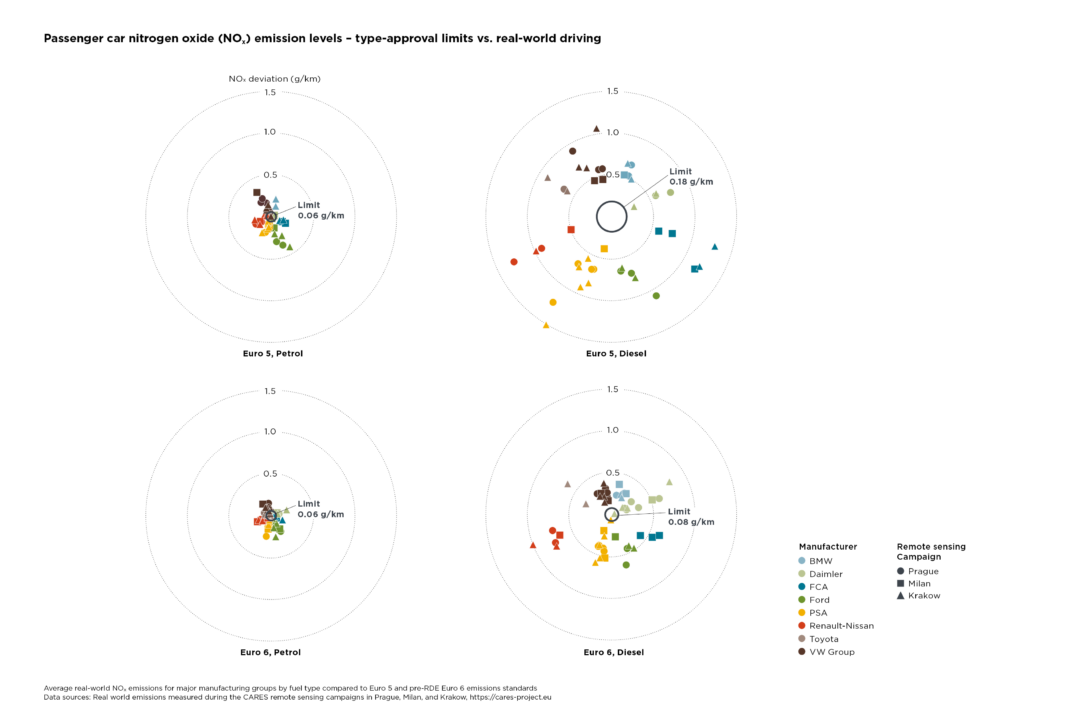5 On-road & other emissions
Remote emission sensing campaigns carried out in three European cities under the CARES project between 2021 and 2022 revealed that average real-world vehicle nitrogen oxides (NOx) emissions decreased with the introduction of the Pre-RDE Euro 6 standard, dropping from 0.7 g/km to 0.3 g/km for diesel vehicles. However, vehicle emissions continue to exceed type-approval limits, with measurements from the campaigns for both Euro 5 and pre-RDE Euro 6 standards averaging nearly 4 times the respective limit values. Euro 5 diesel vehicles tended to exhibit more extreme measurements, with emissions from some manufacturers between 7 and 8 times the type-approval limit. In contrast, emissions of petrol vehicles were found to generally be closer to the type-approval limits.
Since September 2014, pre RDE-Euro 6 emission limits applied to new-vehicle type-approvals, and have been mandatory for all new-vehicle sales since September 2015 (Tab. 5-1). The RDE on-road test procedure, introduced in two steps over a multi-year period beginning in September 2017, applies not-to-exceed (NTE) emission limits for NOx and particulates (Tab. 5-2). Temporary NTE limits were applied during the first RDE stage, which corresponds to the Euro 6d-temp standard, while the final, more stringent limits are mandatory for all new-vehicle type-approvals since the phase-in of the second stage (Euro 6d) in January 2020. From September 2023 onwards, the Euro 6e regulation is in effect and the conformity factor has been replaced by a ‘PEMS margin’ at a level of 1.1 for NOx emissions and 1.34 for PN emissions (Tab. 5-3).


